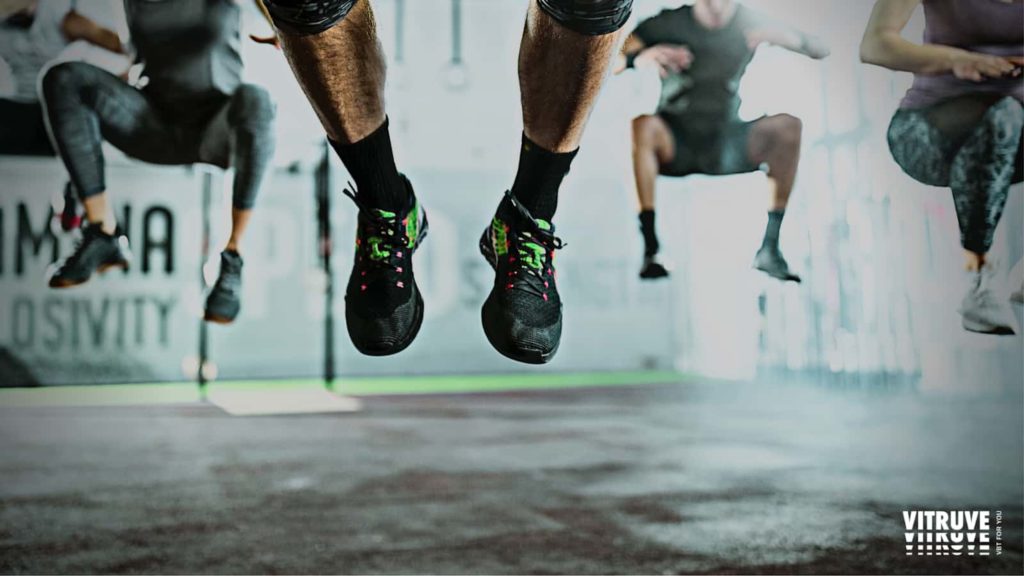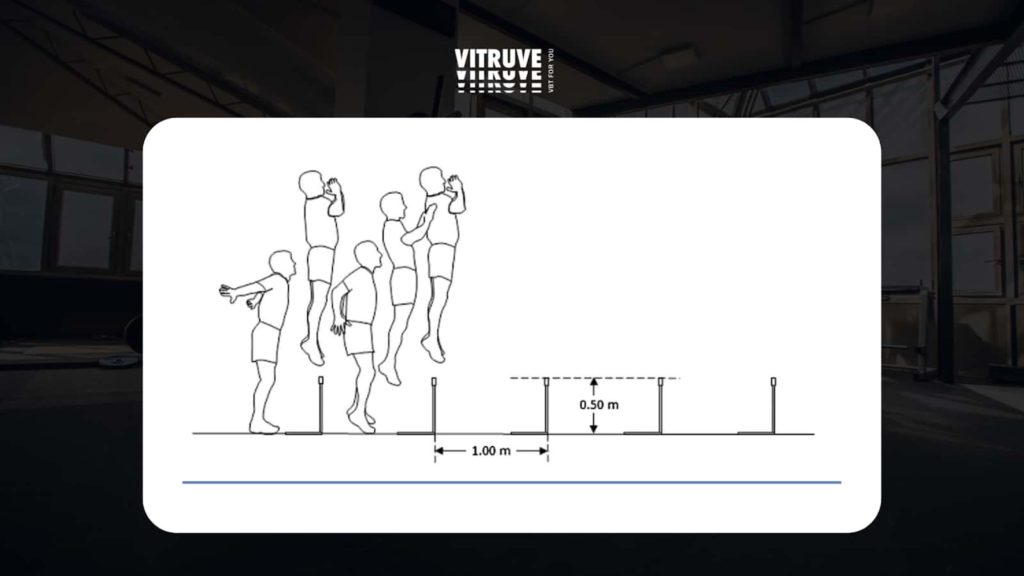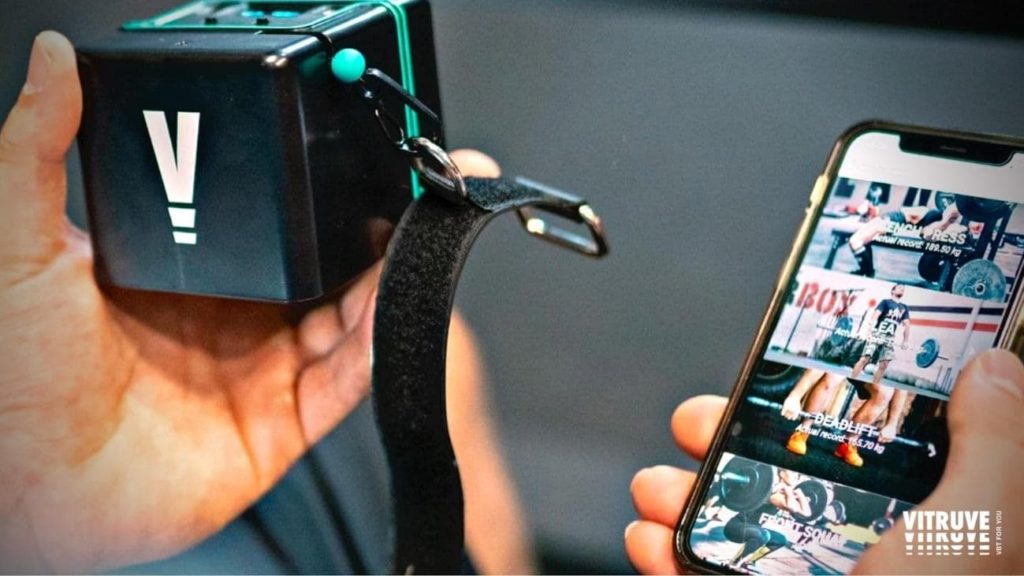8 de June de 2023
Countermovement Jump (CMJ): The Ultimate Test For Lower Body Power
Countermovement Jump (CMJ) – The Ultimate Lower-Body Power Test
Index
The countermovement jump (CMJ) is a test during which the athletes squat to their preferred depth and then jump as high as they can. The primary purpose of this jump test is to measure the lower-body power and lower limb strength. Due to being more accurate than other tests, CMJ is regarded as one of the most reliable methods of measuring lower body power among coaches around the globe. This test has also been found to help measure 1RM maximal strength, sprint performances, and explosive strength.
The two main CMJ techniques are arm-swing CMJ and no-arms-swing CMJ. The performance with arm-swing is 10% better than the no-arm-swing CMJ.

Application
The countermovement jump primarily measures lower body power, which is a critical component in various sports. This jump test measures power by monitoring your jump performance. Performing well with CMJ generally means you can also perform dynamic 1RM squats and power cleans well.
Hence, CMJ is one of the best methods to measure an athlete’s capability to perform in sports that usually require high levels of explosive strength.
How is the CMJ Test Performed?
A consistent environment is the most important consideration for a CMJ test. Such an environment is usually maintained inside an enclosed facility that is generally safe from weather impact. Moreover, the surface to conduct this test should be dry and non-slippery. Conducting this test in an inconsistent environment will yield inconsistent and undependable results.
Equipment Required
You should have the following items to perform a countermovement jump test.
- Consistent and reliable facility (e.g., a sports lab or a gym)
- A force platform, contact mat, high-speed camera, linear position transducer, or an infrared platform
- A sheet to document your performance
- Calculations
CMJ Performance Calculation
The two alternative variables used to calculate the countermovement jump performance are jump height (in centimeters) and relative peak power output. Some other variables are also used to calculate this performance, but it generally requires specialized equipment. For this reason, not many variables are considered in a CMJ test.
Here is the list of variables – aside from jump height and peak power output – used to calculate CMJ performance:
- Relative peak force
- Peak force
- Peak velocity
- Peak power
- Impulse
- Rate of force development
Flight time is the most reliable and valid variable used for measuring CMJ performance related to vertical jumps. This variable is based on the calculation of time an athlete spends in the air after taking off and before making ground contact. The components used for measuring jump height include a contact mat, high-speed camera, force platform, infrared platform, and accelerometer (linear position transducer).
Test Configuration
The configuration used during a CMJ test depends on the measuring instrument or device.
Procedure
Following are the mechanisms of the countermovement jump testing procedure.
- Arm-swing: The person administrating the test will decide whether or not to include the arm-swing during the test. The arm swing is the natural movement that improves the jump performance by 10% compared to the jump without an arm swing. A no-arm-swing jump requires the athlete to rest their hands on the hips throughout the testing procedure. The administrator also pays attention and makes sure that the athlete is not using their hands to exert force on their legs.
- Countermovement depth: This depth is the pre-stretch posture the athlete gets into before taking off. While experts haven’t explained which depth is the most suitable, it is a known fact that larger countermovement depths yield higher jumps and peak power outputs. Which depth is more appropriate is generally the administrator’s or coach’s call.
- During the flight: The athletes are required to maintain extension in their ankle joints, knee, and hips when they are in the air during a jump. The main purpose of this limitation is to prevent achieving any additional flight time.
- Jump displacement: Not only is it necessary for an athlete to jump as high as possible during a CMJ test, but they also have to ensure that they land with the same posture and in the same position as they took off. Coaches and administrators usually apply sellotape to the floor as a mark to help the athlete take off and land in the same position.
The administrator will start the test once the requirements are understood by the athlete and all the configurations are in place.

Scoring System of CMJ
The scoring system of a CMJ test is pretty straightforward. A standard test involves three jumps. The administrator will get a sum of the heights of all three jumps and divide it by three. This measure helps derive the average jump height.

Important Considerations
It is necessary to pay attention to a few important considerations when conducting a CMJ test. These considerations are:
- Individual effort: The athlete should not make sub-maximal efforts as they do not yield accurate scores.
- Take-off and landing locations
- Countermovement depth
- Testing with or without arm-swing
- Keeping the knees, ankles, and hips extended during the flight
Reliability and Validity
The CMJ test is one of the best methods to measure the explosive power of the lower body. In general, this method is more reliable and valid than other jump methods, such as squat jump, standing long jump, Sargent jump, Abalakow’s jump, and standing triple jump.

Wrapping Up
A CMJ test is undoubtedly the best option to consider if you want to measure your lower-body power or lower-limb strength. However, performing this test without the supervision of a qualified administrator will not help you get the most accurate score.
Now, you might wonder if you need to have a coach or administrator noting down your moves even when you have all the pieces of equipment installed. The point is that CMJ testing is not all about tracking height and flight time using the equipment. The administrators look at several different metrics to ensure the test’s accuracy.
[starbox]
VBT GUIDES
LATEST POSTS
FEATURED AUTHORS
